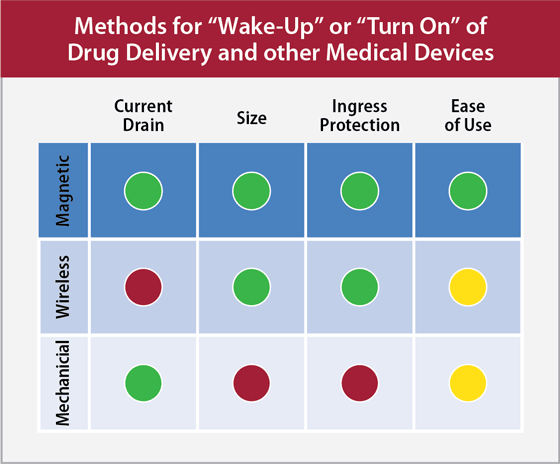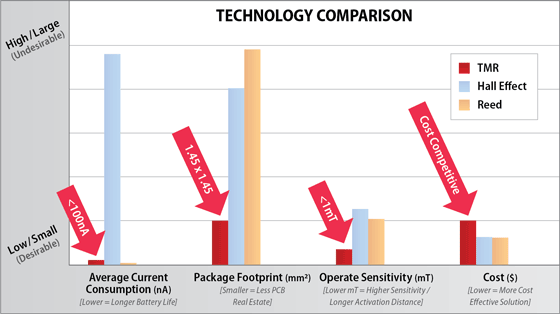Powering on a battery-operated medical or IoT device
12-06-2023 | Rhopoint Components Ltd | Power
Rhopoint Components Ltd has produced this guide for options and considerations to Extend Battery Life. Battery-operated, wirelessly connected devices are becoming increasingly pervasive in today's society. Driven forward by advancements in wireless and battery technologies, coupled with shrinking electronic components that consume less power and cloud-based services ready to collect, analyse and disseminate data, these devices are typically found in consumer, medical and wearable devices and commercial and industrial applications.
Whether the device is a wearable continuous glucose monitor (CGM), an ingestible or implantable medical device, a smart home device, an asset tracker or an environmental monitor, all share the common necessity of small size, long life, reliability, and ease of use. One of the major problems these product designers face is powering on the device when required.
Powering on an IoT device only when needed (or keeping it powered down before deployment) is vital because designers want to use the smallest, lowest cost battery possible. For this reason, extending battery life is always a design goal; battery drain must be minimised during use and before it has been powered on.
One popular example is the continuous glucose monitor (CGM) prescribed to a Type 1 or Type 2 diabetic. This device adheres to a patient's body, continuously monitoring their glucose level. The resulting data is wirelessly transmitted to the patient, doctor and/or insulin pump. CGMs must be very small, 'waterproof', easy to attach and have a reasonably long life before they run out of battery power.
There are three basic options for powering on these devices at the point of use or deployment. For each option, essential variables are battery current drain, size, ingress protection and user-friendliness.
The first 'Power ON' option is electromechanical or the common 'switch'. This option is the means for powering on most battery-operated electronic devices such as laptops and phones. Although switches come in many forms (e.g., push button, slider, or toggle), they operate on the same principle of opening and closing a mechanical contact to allow current to flow (when closed) or completely stop it from flowing (when open). Regarding the first consideration of current drain, the electromechanical switch is highly efficient because it is a passive device that consumes no power. However, mechanical switches are a poor option in terms of size, particularly given the size constraints of many wearable, ingestible and implantable medical devices and other small IoT devices. In terms of ingress protection (or the need to have a device that is impermeable to water and humidity), mechanical switches are not the best option as designing a switch that can be mechanically moved by the user into on/off positions while maintaining impermeability is challenging. Lastly, the consideration of user-friendliness, or ease of use, rates poorly with mechanical switches for two reasons – first: since the user must take this step (and many need to be instructed to do so), the necessity for many devices is 'out-of-the-box turn-on' – a clear conflict with manually operated switches. Secondly, a very small mechanical switch, necessitated by a very small device, could pose a problem for users' ability to move the switch to the ON position, thereby reducing usability. So, in summary, mechanical switches score highly in current consumption but very low relative to ingress protection, size, and ease of use.
Wireless power on is the second option to analyse. Because the devices already have wireless capabilities to transmit data, designers could technically use that same wireless capability to power on a device from a mobile phone app. From an ingress protection standpoint, powering on wirelessly is rated very highly. And, from a size standpoint, powering on wirelessly also rates highly as there is nothing more to add to the device for this functionality. However, from a current drain standpoint, wireless power on scores extremely low because a wireless receiver inside the device must be powered on to receive a signal to power on. For this reason alone, wireless power on is rarely used for devices that have stringent battery life requirements.
The third option is employing a magnetic sensor inside the device to initiate the power on function. In this case, a magnetic field is applied to the sensor to trigger the power on. The magnetic field is typically produced by a magnet located within the product's packaging or in an auxiliary component to the device (such as an applicator for a CGM). The magnetic field can also be applied by the user swiping across the device with a handheld magnet. Magnetic sensing scores very highly for ingress protection (because it is a 'contact-less' method).
Magnetic sensing also scores very highly in ease of use – particularly when the magnet can be embedded in the device packaging (enabling 'out-of-the-box power on') or in an auxiliary component to the device (e.g., an applicator). Sometimes the device is designed as two components that must be connected during deployment. Regarding current drain and size, the desirability of magnetic sensing depends entirely on the magnetic sensing technology. Older, more conventional magnetic sensing technologies types were either small in size but high in power consumption (Hall Effect) or large in size with zero power consumption (reed switches). However, many new devices are designed with a newer magnetic sensing technology called Tunnelling Magnetoresistive (TMR), which delivers a very small size (as small as an LGA-4) and extremely low power consumption, similar to the reed switch. In effect, TMR magnetic sensors offer the 'best of both worlds'.
With the current onslaught of new devices designed to make life easier, safer, contact-less and/or operable remotely, electronic designers have to adopt new technologies to keep up with the evolving requirements of battery-operated wearables, implantables, ingestibles and other IoT devices. In terms of best capabilities relative to small size, lower power consumption, ingress protection and ease of use, magnetic sensors – and TMR sensor technology in particular – are helping to make 'impossible' designs possible.

The TMR Magnetic Sensor provides almost zero power consumption in an ultra-miniature package size; and its contactless ‘power on’ capability delivers ease of use.



